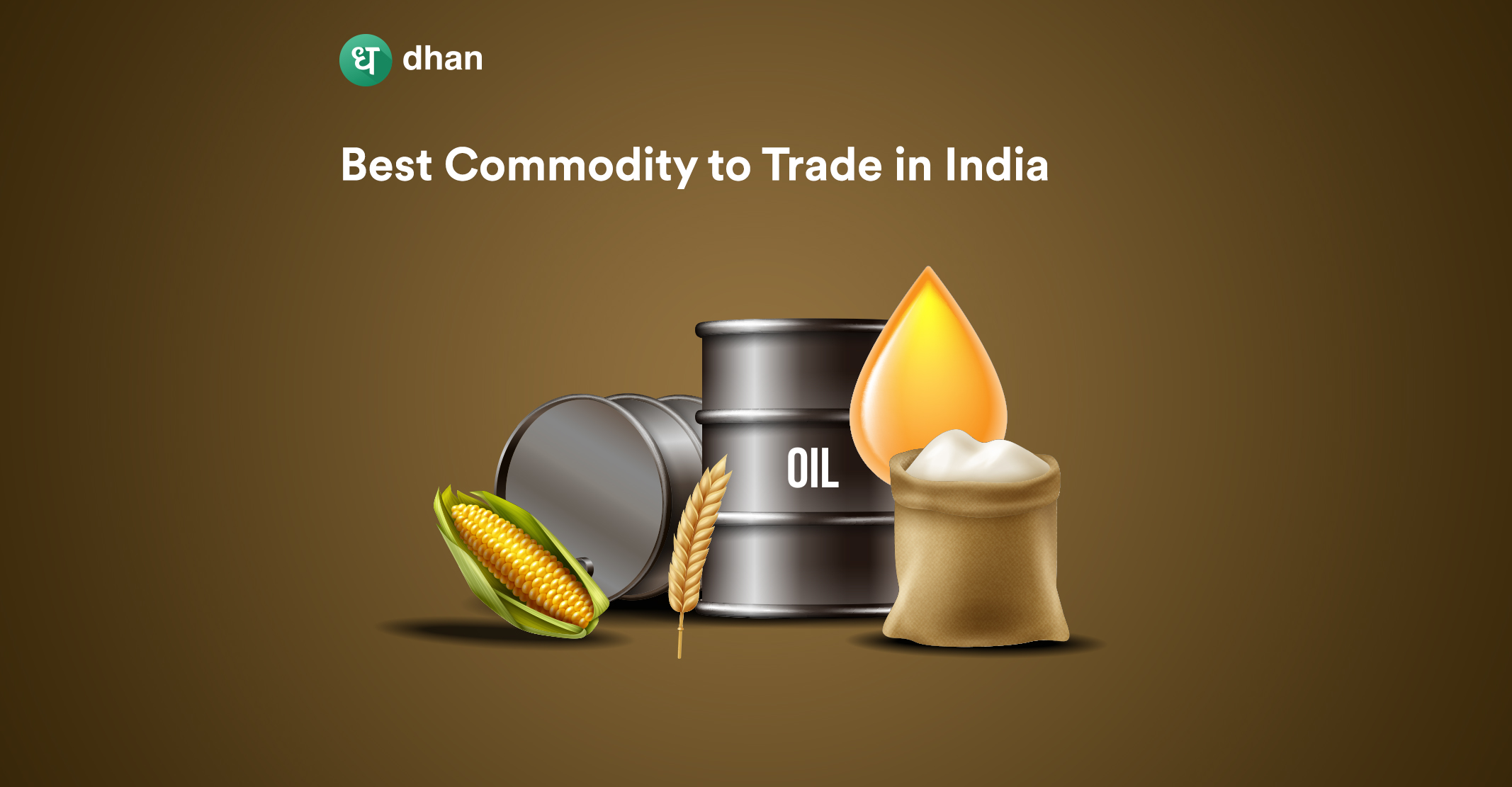You can trade futures and options of more than 20 commodities on MCX alone! These commodities are split into categories like Agri commodities, Base Metals, Bullion, and Energy. That’s not all when it comes to online commodity trading.
There are even more commodities that you can trade on other exchanges. Knowing the list of commodities traded in India on exchanges like MCX and NCDEX can help you plan your strategy. But first, let’s take a recap.
Types of Commodities Traded in India
As a retail trader, you’ve got the opportunity to trade f&o of several types of commodities. These commodities are split into two broad categories:
1. Soft Commodity: Agricultural items like wheat, fruits, vegetables, seeds, and others.
2. Hard Commodity: Industrial items like crude oil, petrol, metals, and others.
The f&o of these two types of commodities are traded on multiple commodity exchanges. The most popular list of commodity markets in India includes the Multi Commodity Exchange of India (MCX) and the National Commodity and Derivatives Exchange (NCDEX).
You’ll notice something peculiar about the commodity exchanges in India. There’s some minor degree of overlap between the types of commodities on MCX and NCDEX. But there are several standalone commodities available on both.
Thus, you’d benefit from knowing the list of commodities traded in India by exchange in order to engage effectively with the futures and options contracts.
Read 👉 MCX Trading Holidays 2023
List of Commodities Traded in India
Amongst the list of commodity markets in India, some commodities have high demand in the market. We have covered a few of these commodities below:
1. Agri Commodities
- Cotton: India is one of the biggest producers of cotton, which is the most crucial textile fiber and natural fiber used for making clothes. In 2022, the export value of cotton was $4.51 billion.
- Soybean: With its many products, Indian Soybeans exports amounted to $50 million in 2022. Despite being one of the top commodities, factors like the weather, demand for dollars, and biodiesel affect the trade of Soybeans.
- Wheat: As a staple food of India, wheat had an export value of $2121 million in 2022. Weather and natural calamities play a significant role not just in wheat production and export, but also in the entire agri commodity market in India
2. Bullion
- Gold: Gold is one of the costliest metals available because of its scarcity. Most individuals use it as a financial asset since it maintains its purchasing power even during inflationary periods.
- Silver: Silver is used in many industries, leading to its high demand. The demand for Silver in commodity trading comes from these three categories – industry, investment, and jewelry (decor). These 3 areas constitute 95% of the demand for silver annually.
3. Energy
- Crude Oil: India is one of the largest importers of crude oil as it relies heavily on it to meet its energy needs. Brent Crude Oil and West Texas Intermediate are two types of crude oils used as the benchmark for the commodity’s price.
- Natural Gas: Like Crude Oil, India is also Natural gas. It ranks 4th globally with an import worth of $10.7 billion in 2021. In terms of natural gas reserves, India ranks 22nd with a total contribution of 0.7% to the total world reserve.
4. Base Metals
- Aluminum: India produces 2.8 million metric tonnes of Aluminum every year. With its varied usage, Aluminum is one of the popular metals for commodity trading.
- Copper: Due to its high demand, copper has high liquidity in the commodity market and is among the favorites for commodity trading.
- Zinc: With its many uses in manufacturing, construction, and electrical applications, India is a big producer of Zinc. It is the 8th largest producer of Zinc globally, with an annual production of 1.5 million metric tonnes. Countries like China, Singapore, the US, and Japan import Zinc from India.
List of Commodities Trade in India By Exchange
As discussed earlier, there are mainly two commodity exchanges in India: MCX and NCDEX. Here is the classification of commodities traded on each of these exchanges.
| Commodity Type | MCX |
| Base Metals | Nickel Copper Zinc Zinc Mini Lead Lead Mini Aluminum Aluminum Mini |
| Energy | Crude Oil Crude Oil MiniNatural GasNatural Gas Mini |
| Bullion | Gold Gold Guinea Gold Mini Gold Petal Silver Silver Mini Silver Micro |
| Agri | Castor Seed Cotton Crude Palm Oil Mentha Oil |
| Commodity Type | NCDEX |
| Cereals and Pulses | Chana Barley Bajra Wheat Moong Maize Paddy (Basmati) |
| Oils and Oil Seeds | Castor Seeds Refined Castor Oil Cotton Seed Oil Cake Soybean Refined Soy Oil Mustard Seed Crude Palm Oil Natural Whitish Sesame Seeds Hipro Soybean Meal |
| Spices | Turmeric Coriander Jeera |
| Metals | Steel Long |
| Soft | Gur Robusta Cherry AB Coffee Isabgol Seed |
| Guar Complex | Guar Seed 10 MT Guar Gum Refined Splits |
| Fibers | Kapas 29 mm Cotton |
Conclusion
The Indian commodity market offers numerous opportunities for you to participate, hedge, and speculate via futures and options. From metals and energy to bullion and agriculture, you can trade commodities or their derivatives (options and futures) on MCX or NCDEX to diversify your portfolio.
More commodity trading blogs:



